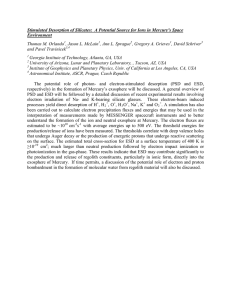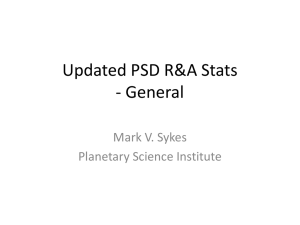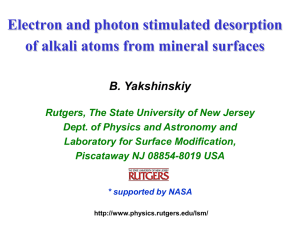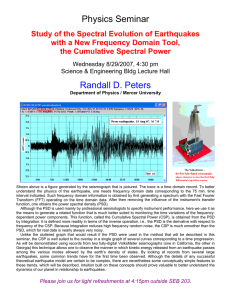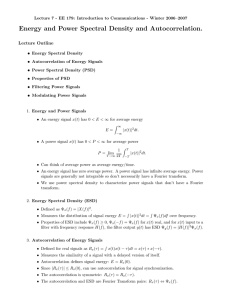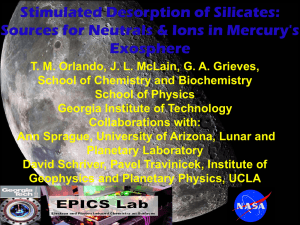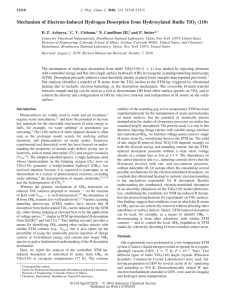Electron and Photon Stimulated Desorption of Alkali atoms from Mineral... B. Yakshinskiy and R. Bartynski
advertisement
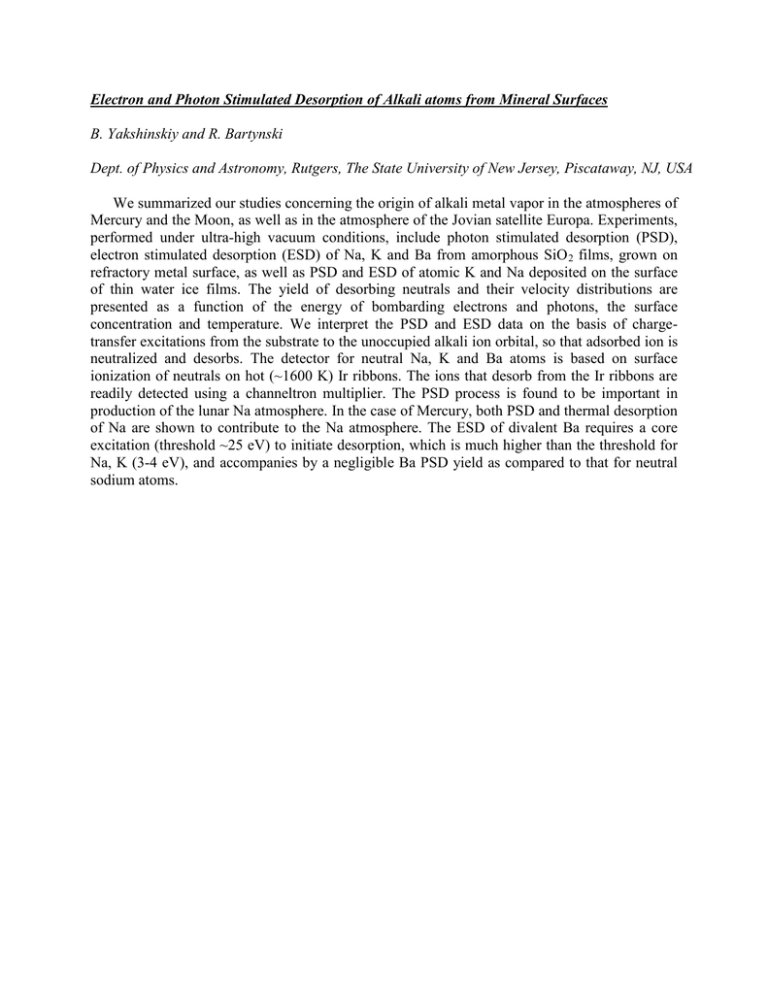
Electron and Photon Stimulated Desorption of Alkali atoms from Mineral Surfaces B. Yakshinskiy and R. Bartynski Dept. of Physics and Astronomy, Rutgers, The State University of New Jersey, Piscataway, NJ, USA We summarized our studies concerning the origin of alkali metal vapor in the atmospheres of Mercury and the Moon, as well as in the atmosphere of the Jovian satellite Europa. Experiments, performed under ultra-high vacuum conditions, include photon stimulated desorption (PSD), electron stimulated desorption (ESD) of Na, K and Ba from amorphous SiO 2 films, grown on refractory metal surface, as well as PSD and ESD of atomic K and Na deposited on the surface of thin water ice films. The yield of desorbing neutrals and their velocity distributions are presented as a function of the energy of bombarding electrons and photons, the surface concentration and temperature. We interpret the PSD and ESD data on the basis of chargetransfer excitations from the substrate to the unoccupied alkali ion orbital, so that adsorbed ion is neutralized and desorbs. The detector for neutral Na, K and Ba atoms is based on surface ionization of neutrals on hot (~1600 K) Ir ribbons. The ions that desorb from the Ir ribbons are readily detected using a channeltron multiplier. The PSD process is found to be important in production of the lunar Na atmosphere. In the case of Mercury, both PSD and thermal desorption of Na are shown to contribute to the Na atmosphere. The ESD of divalent Ba requires a core excitation (threshold ~25 eV) to initiate desorption, which is much higher than the threshold for Na, K (3-4 eV), and accompanies by a negligible Ba PSD yield as compared to that for neutral sodium atoms.
